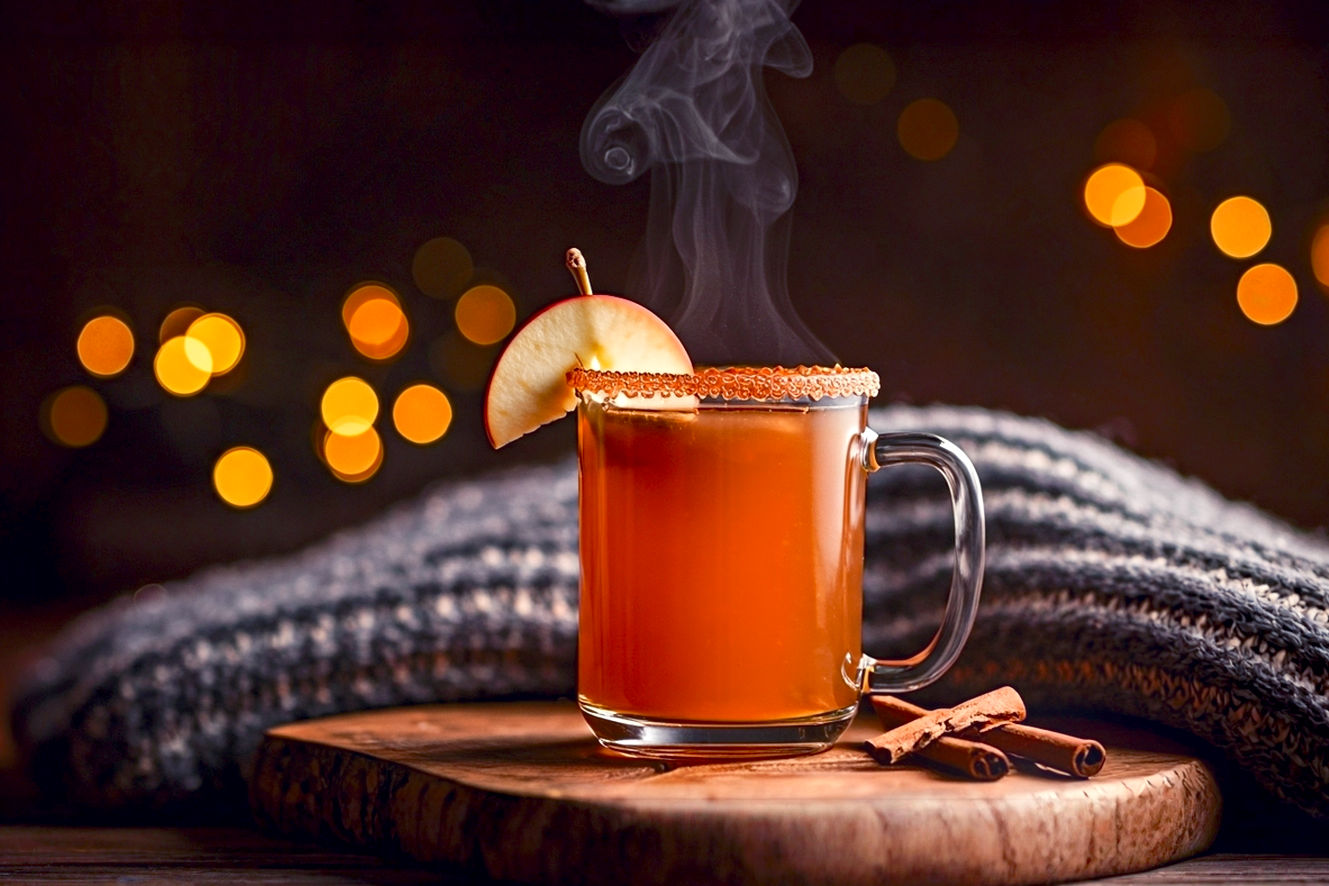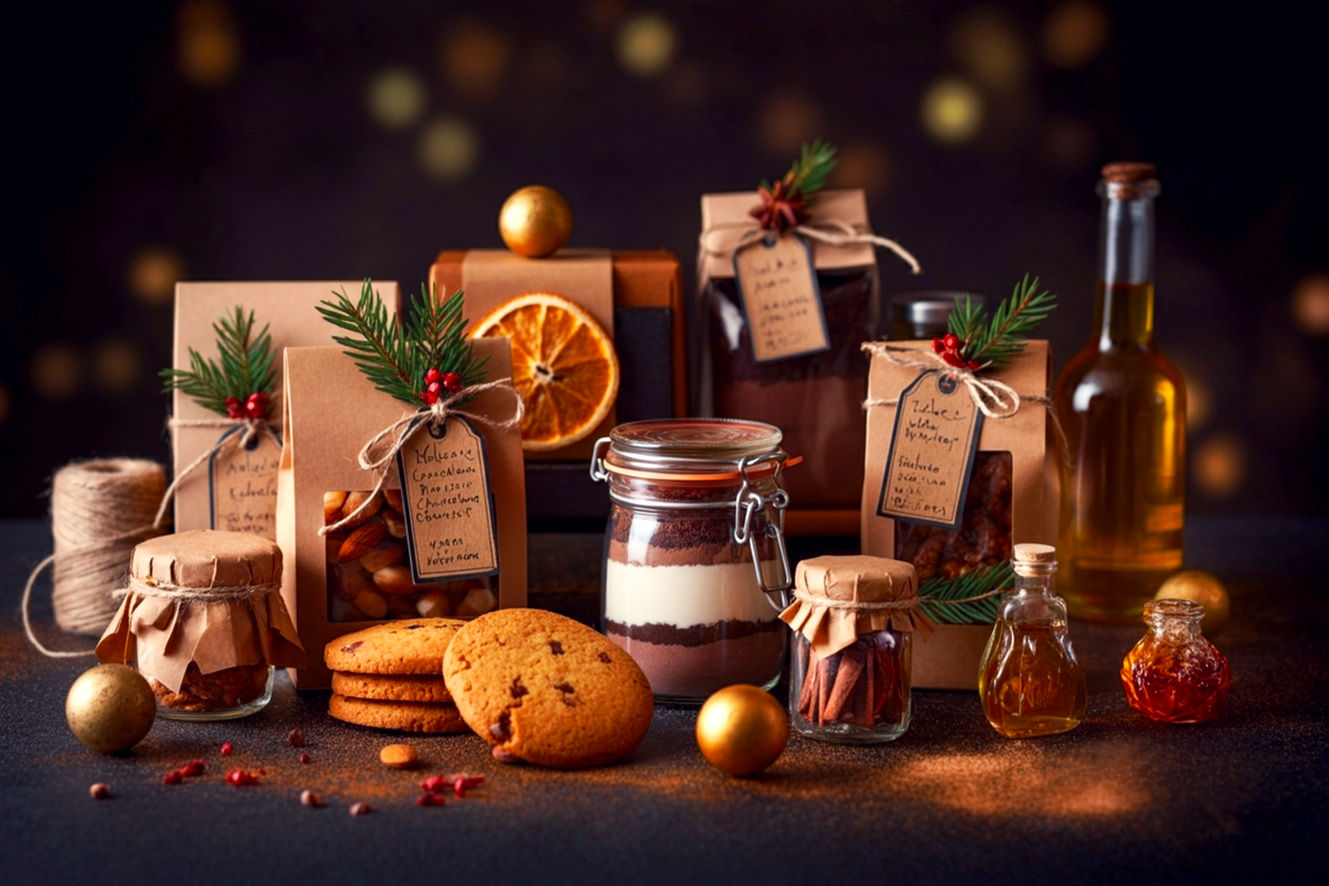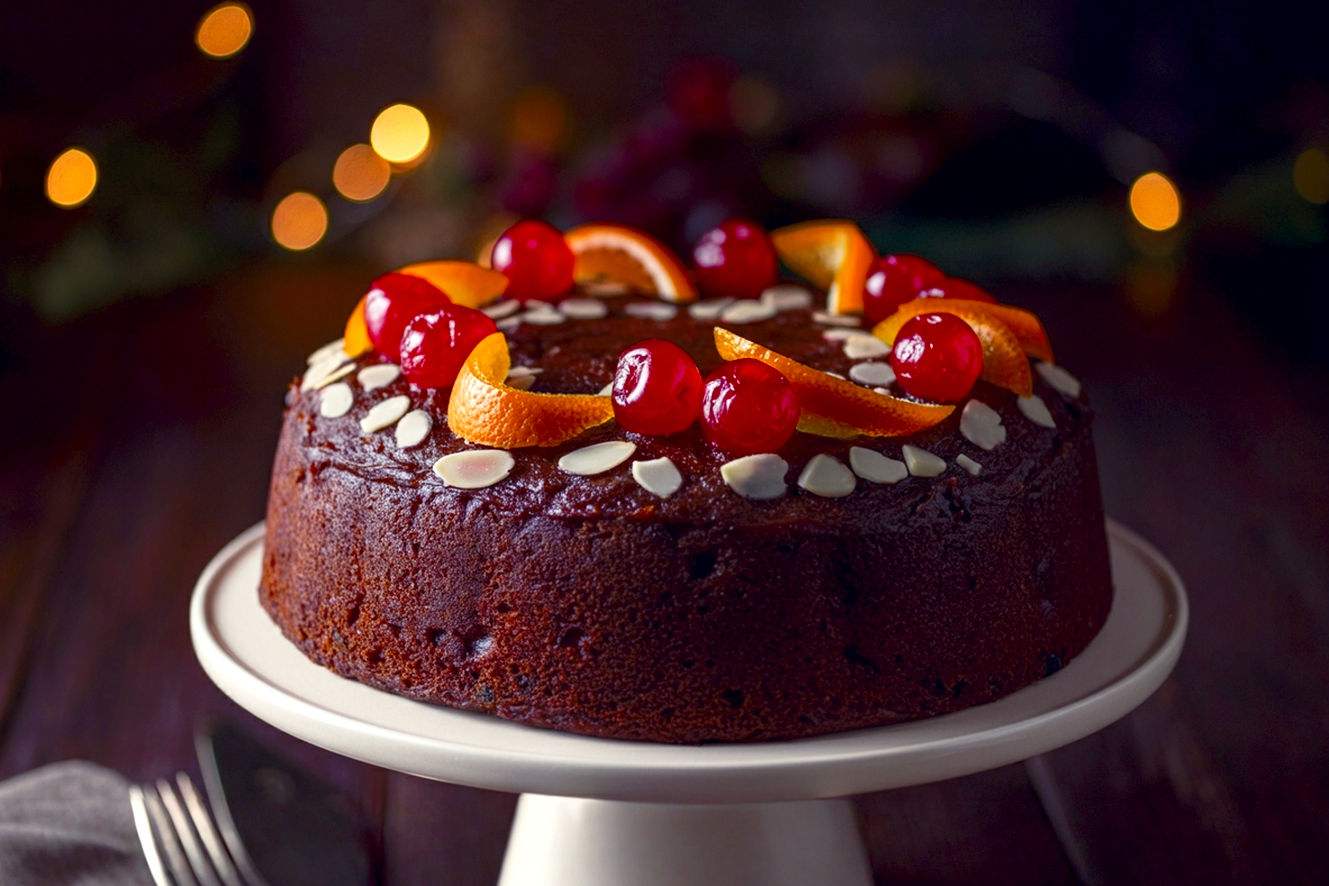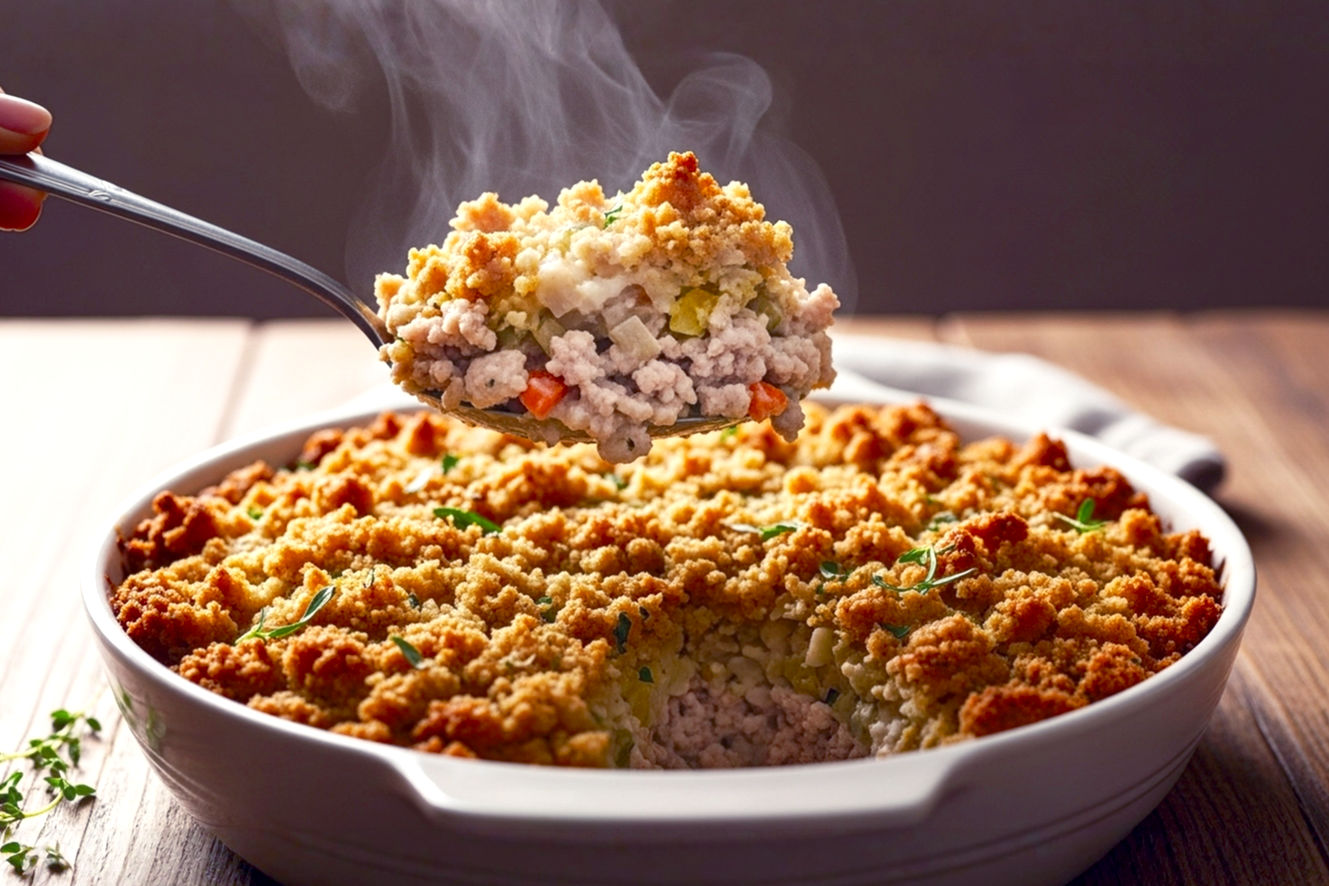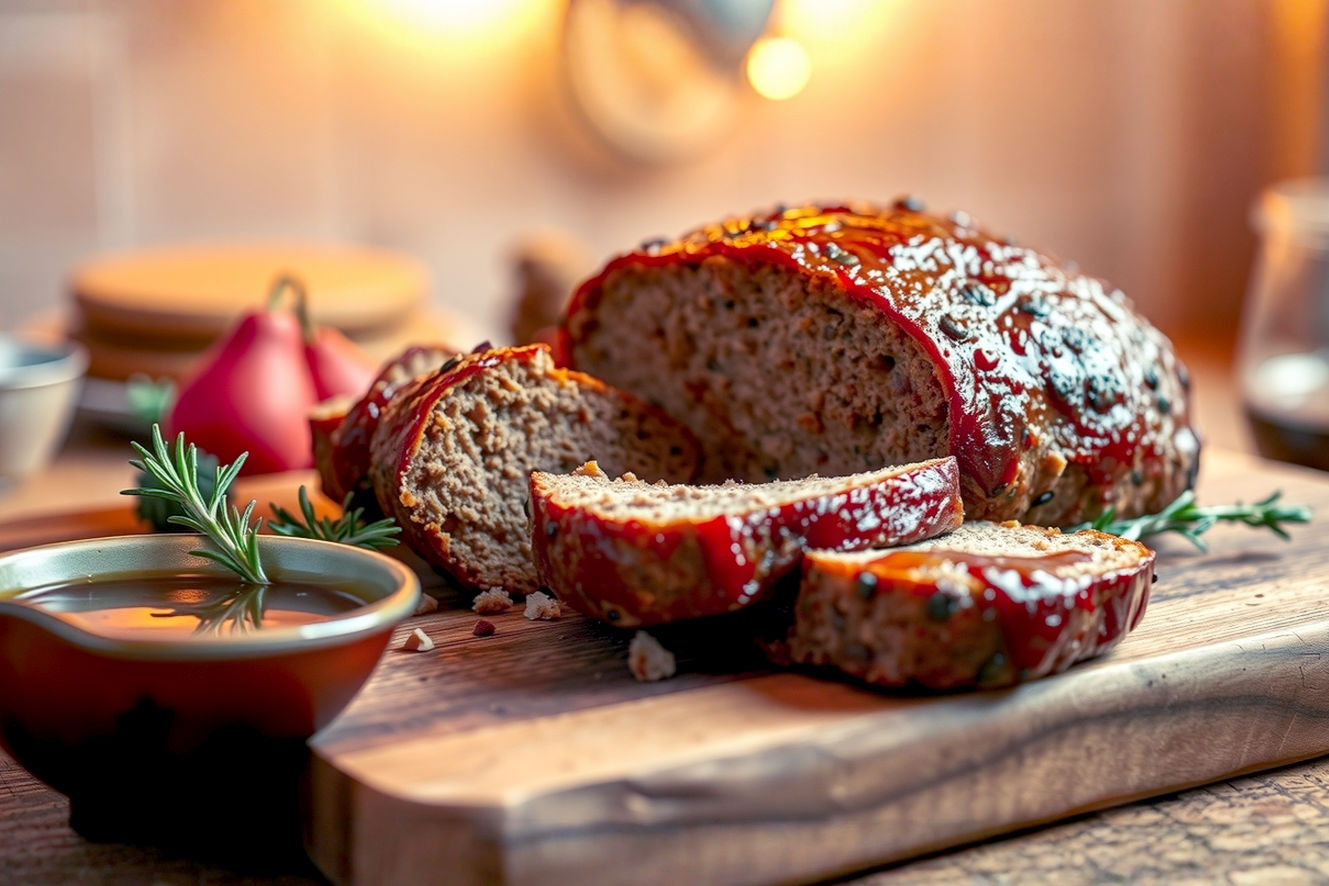This post may contain affiliate links. If you make a purchase through these links, we may earn a commission at no additional cost to you.
Christmas dinner is a time for celebration, warmth, and, most importantly, incredible food. For many, the traditional roast takes center stage, but as culinary tastes evolve and dietary preferences shift, more and more people are discovering the joy of a vegetarian Christmas dinner. It’s not just about offering an alternative; it’s about creating a feast that’s every bit as rich, flavorful, and festive as any traditional spread. Embracing vegetarian options opens up a world of vibrant ingredients, exciting textures, and innovative dishes that can truly dazzle your holiday table.
This article isn’t just a collection of recipes; it’s a guide to crafting a memorable, meat-free Christmas celebration. We’ll explore five standout vegetarian Christmas dinner recipes that promise to be the stars of your festive feast. From a showstopping main course that will impress even the most devoted carnivores to delightful side dishes and a comforting dessert, we’ve got your holiday menu covered. Get ready to transform your Christmas dinner into an extraordinary culinary experience that’s both delicious and inclusive.
The Heart of the Feast: Crafting a Memorable Vegetarian Main Course
The main dish is often the focal point of any Christmas dinner, and a vegetarian Christmas is no exception. While the classic nut roast has long been a staple, the landscape of vegetarian main courses for Christmas has expanded dramatically. Today, you can find incredibly sophisticated and satisfying options that move beyond simple meat substitutes, focusing instead on the inherent deliciousness of plant-based ingredients. The goal is to create a dish that feels celebratory, substantial, and utterly delicious, ensuring no one feels like they’re missing out.
When choosing a main course, consider factors like texture, depth of flavor, and how well it complements other dishes. A good vegetarian centerpiece should offer a satisfying “bite” and a complex flavor profile that stands up to the richness of the holiday season.
Recipe 1: Elegant Mushroom & Chestnut Wellington
A Wellington is a truly impressive dish, traditionally made with beef. However, a vegetarian version, particularly one featuring earthy mushrooms and sweet chestnuts, offers a sophisticated and incredibly flavorful alternative. This festive vegetarian recipe is perfect for a Christmas table, providing a beautiful golden crust and a rich, savory filling that will delight everyone.
Why It’s Perfect for Christmas
The Mushroom & Chestnut Wellington is a fantastic choice because it looks incredibly elegant when sliced, making it a true centerpiece. Its rich, umami-packed filling feels indulgent and hearty, perfectly suited for a cold winter’s night. The flaky pastry adds a wonderful textural contrast, elevating the dish beyond a simple roast. It’s also surprisingly adaptable, allowing for various herb and spice additions to tailor it to your taste.
Ingredients List
- For the Filling:
- 2 tablespoons olive oil
- 1 large onion, finely chopped
- 2 cloves garlic, minced
- 500g mixed mushrooms (cremini, shiitake, oyster), finely chopped or pulsed in a food processor
- 200g cooked chestnuts, roughly chopped (canned or vacuum-packed are fine)
- 100g breadcrumbs (panko or fresh)
- 50g walnuts, finely chopped
- 2 tablespoons fresh parsley, chopped
- 1 tablespoon fresh thyme leaves
- 1 teaspoon dried sage
- Salt and freshly ground black pepper to taste
- 1 tablespoon soy sauce or tamari (for umami depth)
- 1 tablespoon Dijon mustard
- For the Assembly:
- 1 sheet (approx. 375g) ready-rolled puff pastry (ensure it’s vegetarian/vegan if needed)
- 1 egg, beaten (for egg wash) or plant-based milk (for vegan wash)
Step-by-Step Preparation
- Sauté Aromatics: Heat olive oil in a large skillet or frying pan over medium heat. Add the chopped onion and cook until softened and translucent, about 5-7 minutes. Add the minced garlic and cook for another minute until fragrant.
- Cook Mushrooms: Add the finely chopped mushrooms to the skillet. Cook over medium-high heat, stirring occasionally, until all the liquid has evaporated and the mushrooms are deeply browned and caramelized. This step is crucial for intense flavor. Technical detail: Reducing the mushroom liquid through evaporation concentrates their natural glutamates, enhancing the savory umami flavor. This process, known as the Maillard reaction, creates new flavor compounds and a richer color.
- Combine Filling Ingredients: Remove the skillet from the heat. Stir in the chopped chestnuts, breadcrumbs, walnuts, fresh parsley, fresh thyme, dried sage, salt, pepper, soy sauce, and Dijon mustard. Mix thoroughly until well combined. The mixture should be firm enough to hold its shape. If it seems too wet, add a little more breadcrumbs. If too dry, add a splash of vegetable broth.
- Chill the Filling: Transfer the mushroom mixture to a bowl and let it cool completely. For best results, cover and refrigerate for at least 30 minutes, or up to 24 hours. Chilling makes it easier to handle and prevents the pastry from becoming soggy.
- Assemble the Wellington: Preheat your oven to 400°F (200°C). Line a baking sheet with parchment paper. Unroll the puff pastry sheet onto the prepared baking sheet. Shape the chilled mushroom mixture into a log on one half of the pastry, leaving a border of about 1-2 inches around the edges.
- Fold and Seal: Fold the other half of the pastry over the filling. Press down firmly around the edges to seal, then crimp with a fork for a decorative finish and to ensure a tight seal. You can also make a few small slits on top of the pastry to allow steam to escape during baking, which helps prevent puff pastry from becoming too dense. Technical detail: These slits, called “vents,” prevent steam buildup inside the pastry, which could cause it to burst open or become unevenly puffed. The steam escapes, allowing the pastry to crisp up properly.
- Egg Wash and Bake: Brush the entire surface of the Wellington with the beaten egg (or plant-based milk for vegan). This egg wash creates a beautiful golden-brown, glossy crust. Bake for 30-35 minutes, or until the pastry is puffed, deeply golden, and cooked through.
- Rest and Serve: Let the Wellington rest for 5-10 minutes before slicing. This allows the filling to set and makes for cleaner slices. Serve warm.
Tips for a Perfect Golden Crust
- Even Egg Wash: Apply the egg wash evenly over the entire surface. Don’t miss the sides!
- Cold Pastry: Ensure your puff pastry is cold when you start working with it. This helps it puff up beautifully in the oven.
- Hot Oven: A hot oven is crucial for rapid puffing and browning.
- Don’t Overfill: Too much filling can make it hard to seal and prevent even cooking.
Serving Suggestions
This Wellington pairs wonderfully with a rich vegetarian gravy, roasted potatoes, and green vegetables like asparagus or green beans. A dollop of cranberry sauce on the side adds a lovely tart contrast.
Recipe 2: Savory Lentil & Walnut Loaf with Cranberry Glaze
For a hearty, comforting, and deeply flavorful main, a lentil and walnut loaf is an excellent choice. This meat-free Christmas dinner option is substantial enough to satisfy, packed with protein and fiber, and incredibly versatile. The addition of a sweet and tangy cranberry glaze elevates it to a truly festive dish, perfect for a holiday spread.
A Hearty, Flavorful Alternative
This loaf provides a satisfying texture that’s reminiscent of traditional meatloaf, but with a complex, earthy flavor profile from the lentils, walnuts, and herbs. It’s a fantastic option for those who prefer a more rustic, comforting centerpiece. The combination of ingredients creates a rich umami taste that makes it incredibly moreish.
Ingredients List
- For the Loaf:
- 1 tablespoon olive oil
- 1 large onion, finely chopped
- 2 carrots, finely diced
- 2 celery stalks, finely diced
- 2 cloves garlic, minced
- 1 cup green or brown lentils, rinsed
- 3 cups vegetable broth
- 1 cup walnuts, finely chopped
- 1/2 cup breadcrumbs (panko or fresh)
- 1/4 cup fresh parsley, chopped
- 1 tablespoon fresh thyme leaves
- 1 teaspoon dried sage
- 1 tablespoon soy sauce or tamari
- 1 tablespoon Dijon mustard
- Salt and freshly ground black pepper to taste
- 1 flax egg (1 tablespoon ground flaxseed mixed with 3 tablespoons water, let sit for 5 minutes) OR 1 regular egg, beaten
- For the Cranberry Glaze:
- 1/2 cup cranberry sauce (store-bought or homemade)
- 2 tablespoons maple syrup
- 1 tablespoon Dijon mustard
- 1 tablespoon apple cider vinegar
Step-by-Step Preparation
- Cook Lentils: In a medium saucepan, combine the rinsed lentils and vegetable broth. Bring to a boil, then reduce heat, cover, and simmer for 20-25 minutes, or until the lentils are tender but still hold their shape. Drain any excess liquid and set aside. Technical detail: Cooking lentils until tender but not mushy is key for the loaf’s texture. Overcooked lentils can make the loaf too dense, while undercooked ones will make it crumbly.
- Sauté Vegetables: While the lentils cook, heat olive oil in a large skillet over medium heat. Add the chopped onion, carrots, and celery. Cook, stirring occasionally, until the vegetables are softened, about 8-10 minutes. Add the minced garlic and cook for another minute until fragrant.
- Combine Loaf Ingredients: In a large mixing bowl, combine the cooked lentils, sautéed vegetables, finely chopped walnuts, breadcrumbs, fresh parsley, fresh thyme, dried sage, soy sauce, Dijon mustard, salt, pepper, and the flax egg (or regular egg). Mix everything thoroughly until well combined. The mixture should be moist enough to hold its shape when pressed.
- Form and Bake Loaf: Preheat your oven to 375°F (190°C). Lightly grease a loaf pan (8×4 or 9×5 inches) or line it with parchment paper, leaving an overhang on the sides for easy removal. Press the lentil mixture firmly and evenly into the prepared loaf pan. Bake for 30 minutes.
- Prepare Glaze: While the loaf bakes, whisk together all the ingredients for the cranberry glaze in a small bowl: cranberry sauce, maple syrup, Dijon mustard, and apple cider vinegar.
- Glaze and Finish Baking: After 30 minutes, remove the loaf from the oven. Carefully spread the cranberry glaze over the top of the loaf. Return to the oven and bake for another 15-20 minutes, or until the glaze is slightly caramelized and the loaf is firm and golden brown.
- Rest and Serve: Let the loaf rest in the pan for at least 10-15 minutes before carefully lifting it out using the parchment paper overhang. This resting period is crucial as it allows the loaf to firm up and prevents it from crumbling when sliced. Slice and serve warm.
The Magic of the Cranberry Glaze
The cranberry glaze is more than just a topping; it’s a critical component that adds a burst of festive flavor. The sweetness of the cranberries and maple syrup is balanced by the tang of apple cider vinegar and the subtle sharpness of Dijon mustard. This creates a beautiful contrast to the savory loaf, making each bite exciting. The glaze also helps create a lovely caramelized crust on top of the loaf.
Make-Ahead Tips
You can prepare the lentil and walnut mixture up to 2 days in advance and store it in an airtight container in the refrigerator. Form the loaf and bake on the day of serving. The glaze can also be made a day ahead.
Showstopping Sides: Elevating the Vegetarian Christmas Plate
While the main course often gets the most attention, the side dishes are truly what complete a festive vegetarian meal. They add layers of flavor, texture, and color, transforming a simple plate into a lavish feast. For a Christmas dinner, sides aren’t just an afterthought; they’re an integral part of the experience, offering variety and complementing the richness of the main dish. Think about balancing creamy textures with crisp ones, and sweet flavors with savory notes.
Choosing the right combination of sides can elevate your entire Christmas spread, ensuring every element on the plate contributes to a harmonious and delicious experience.
Recipe 3: Roasted Root Vegetables with Maple-Thyme Glaze
Roasted root vegetables are a quintessential winter side dish, and for good reason. Roasting brings out their natural sweetness and creates a wonderful caramelized exterior. Adding a simple maple-thyme glaze takes them from good to extraordinary, making them a vibrant and flavorful addition to any vegetarian holiday feast.
Bringing Out Natural Sweetness
Root vegetables like carrots, parsnips, and sweet potatoes are naturally sweet, and the high heat of roasting, combined with the sugars in maple syrup, intensifies this sweetness through caramelization. The thyme adds an aromatic, earthy note that beautifully balances the sweetness, creating a sophisticated flavor profile.
Ingredients List
- For the Vegetables:
- 1 lb carrots, peeled and chopped into 1-inch pieces
- 1 lb parsnips, peeled and chopped into 1-inch pieces
- 1 lb sweet potatoes, peeled and chopped into 1-inch pieces
- 1 red onion, cut into wedges
- 2 tablespoons olive oil
- Salt and freshly ground black pepper to taste
- For the Maple-Thyme Glaze:
- 3 tablespoons maple syrup
- 1 tablespoon olive oil
- 1 tablespoon fresh thyme leaves, chopped
- 1 teaspoon Dijon mustard (optional, for a slight tang)
Step-by-Step Preparation
- Prepare Vegetables: Preheat your oven to 400°F (200°C). In a large bowl, combine the chopped carrots, parsnips, sweet potatoes, and red onion wedges. Drizzle with 2 tablespoons of olive oil, salt, and pepper. Toss well to coat evenly.
- Initial Roast: Spread the seasoned vegetables in a single layer on a large baking sheet. Avoid overcrowding the pan, as this will steam the vegetables instead of roasting them. If necessary, use two baking sheets. Roast for 20 minutes. Technical detail: Overcrowding a baking sheet lowers the surface temperature due to increased moisture release from the vegetables, preventing proper browning and crisping. Spreading them in a single layer allows for maximum direct heat exposure and air circulation, promoting the Maillard reaction for optimal flavor and texture.
- Prepare Glaze: While the vegetables are roasting, whisk together the maple syrup, 1 tablespoon olive oil, chopped fresh thyme, and optional Dijon mustard in a small bowl.
- Glaze and Finish Roasting: After 20 minutes, remove the baking sheet from the oven. Drizzle the maple-thyme glaze over the partially roasted vegetables. Toss gently to coat. Return to the oven and continue roasting for another 20-25 minutes, or until the vegetables are tender, caramelized, and slightly browned at the edges.
- Serve: Serve hot, garnished with a few extra fresh thyme sprigs if desired.
Choosing the Best Root Vegetables
For the best results, choose firm, unblemished root vegetables. You can also experiment with other root vegetables like beetroot (which adds a beautiful color), celeriac, or even small potatoes. Ensure all vegetables are cut into roughly the same size pieces for even cooking.
Herb Variations
While thyme is classic, rosemary or sage also work beautifully with roasted root vegetables. You can even combine herbs for a more complex aroma. A pinch of smoked paprika can add a subtle smoky depth.
Recipe 4: Creamy Dauphinoise Potatoes (Vegetarian Version)
Dauphinoise potatoes are the epitome of comfort food: thinly sliced potatoes baked in a rich, creamy sauce until tender and golden. This easy vegetarian Christmas dinner side is incredibly indulgent and a guaranteed crowd-pleaser, offering a luxurious texture and satisfying flavor that complements any main course.
A Classic Comfort Food
This dish is a staple for a reason. The layers of thinly sliced potatoes absorb the creamy liquid, becoming incredibly soft and flavorful. The top layer browns beautifully, creating a delightful contrast in texture. It’s a dish that feels special and celebratory, perfect for a holiday meal.
Ingredients List
- 2 lbs (approx. 4-5 medium) russet or Yukon Gold potatoes, peeled and very thinly sliced (ideally with a mandoline)
- 2 cloves garlic, minced
- 2 cups heavy cream (or a mix of cream and milk for a lighter version)
- 1 cup vegetable broth
- 1/2 cup grated Gruyère or sharp cheddar cheese (ensure vegetarian rennet if applicable)
- 1/4 cup grated Parmesan cheese (ensure vegetarian rennet if applicable), plus extra for topping
- Salt and freshly ground black pepper to taste
- Pinch of nutmeg (optional, but highly recommended)
- 1 tablespoon butter, for greasing the dish
Step-by-Step Preparation
- Prepare Potatoes: Preheat your oven to 375°F (190°C). Butter a 9×13 inch baking dish (or an equivalent oven-safe dish). The thinness of the potato slices is crucial for the dish’s texture; a mandoline slicer is highly recommended for uniform slices. Technical detail: Uniformly thin potato slices ensure even cooking and allow the layers to meld together seamlessly, creating a consistent, creamy texture throughout the dish. Inconsistent thickness can lead to some potatoes being undercooked while others are mushy.
- Season Cream Mixture: In a large bowl, whisk together the heavy cream, vegetable broth, minced garlic, salt, pepper, and nutmeg (if using).
- Layer Potatoes and Cheese: Arrange a single layer of potato slices in the bottom of the prepared baking dish, slightly overlapping them. Sprinkle a little of the Gruyère/cheddar and Parmesan cheese over the potatoes. Repeat layering potatoes and cheese until all the potatoes are used, ending with a layer of potatoes on top.
- Pour Cream Mixture: Carefully pour the cream mixture evenly over the layered potatoes. Gently press down on the potatoes to ensure they are submerged in the liquid. Sprinkle the remaining Parmesan cheese generously over the top.
- Bake: Cover the baking dish tightly with aluminum foil. Bake for 45 minutes.
- Uncover and Brown: Remove the foil and continue baking for another 30-45 minutes, or until the potatoes are very tender when pierced with a fork and the top is golden brown and bubbly. If the top isn’t browning enough, you can briefly turn on the broiler for a minute or two, watching carefully to prevent burning.
- Rest and Serve: Let the dauphinoise potatoes rest for 10-15 minutes before serving. This allows the creamy sauce to set slightly, making it easier to serve.
Achieving the Perfect Creaminess
The key to perfectly creamy dauphinoise potatoes lies in the ratio of cream to potatoes and the slow baking process. The potatoes slowly absorb the liquid, becoming tender and infused with flavor. Using heavy cream ensures a rich, luxurious texture. Don’t rush the baking; patience will be rewarded with a truly decadent side.
Cheese Options
Gruyère is a classic choice for its nutty, savory flavor and excellent melting properties. Sharp cheddar adds a more robust, tangy note. For a vegetarian version, ensure the cheeses you select are made with vegetarian rennet. You can also experiment with other melty cheeses like Fontina or Emmental.
The Grand Finale: A Festive Vegetarian Dessert
No Christmas dinner is complete without a delightful dessert to round off the meal. After a rich and savory feast, the dessert should provide a sweet, comforting, and celebratory conclusion. Whether you prefer something light and fruity or rich and decadent, a well-chosen dessert is the perfect way to end a vegetarian Christmas feast.
Consider the balance: if your main course was very rich, a lighter, fruit-based dessert might be a welcome contrast. If the meal was more savory, a truly indulgent sweet treat could be just the ticket.
Recipe 5: Spiced Apple & Blackberry Crumble with Vanilla Custard
A warm fruit crumble is the epitome of comforting desserts, and a spiced apple and blackberry version is particularly fitting for Christmas. The tartness of the berries combined with the sweetness of the apples and warming spices creates a harmonious flavor profile, topped with a buttery, crunchy crumble. Served with homemade vanilla custard, it’s a truly irresistible Christmas dessert vegetarian option.
A Warm, Comforting Classic
This crumble offers a wonderful blend of textures: soft, tender fruit, and a crisp, golden oat topping. The aroma of baked apples and spices fills the kitchen, adding to the festive atmosphere. It’s a dessert that feels wholesome yet indulgent, and it’s relatively easy to prepare, making it ideal for a busy Christmas day.
Ingredients List
- For the Fruit Filling:
- 4 large Granny Smith apples, peeled, cored, and chopped into 1-inch pieces
- 2 cups fresh or frozen blackberries (if frozen, no need to thaw)
- 1/2 cup granulated sugar (adjust to taste, depending on apple sweetness)
- 2 tablespoons all-purpose flour (or cornstarch for gluten-free)
- 1 teaspoon ground cinnamon
- 1/2 teaspoon ground nutmeg
- 1/4 teaspoon ground cloves or allspice
- 1 tablespoon lemon juice
- For the Crumble Topping:
- 1 cup all-purpose flour
- 1/2 cup rolled oats
- 1/2 cup light brown sugar, packed
- 1/2 teaspoon ground cinnamon
- 1/4 teaspoon salt
- 1/2 cup (1 stick) cold unsalted butter, cut into small cubes
- For the Vanilla Custard:
- 2 cups whole milk
- 1/2 cup heavy cream
- 1 vanilla bean, split lengthwise and seeds scraped (or 1 teaspoon vanilla extract)
- 4 large egg yolks
- 1/4 cup granulated sugar
Step-by-Step Preparation
- Prepare Fruit Filling: Preheat your oven to 375°F (190°C). In a large bowl, combine the chopped apples, blackberries, granulated sugar, flour, cinnamon, nutmeg, cloves/allspice, and lemon juice. Toss gently to coat the fruit evenly. Pour the fruit mixture into a 9×13 inch baking dish or an equivalent oven-safe dish.
- Prepare Crumble Topping: In a separate medium bowl, combine the flour, rolled oats, brown sugar, cinnamon, and salt. Add the cold butter cubes. Using your fingertips, a pastry blender, or a food processor, cut the butter into the dry ingredients until the mixture resembles coarse crumbs with some pea-sized pieces of butter remaining. Technical detail: Keeping the butter cold and not overworking the mixture is essential for a tender, crumbly topping. The cold butter creates pockets of steam during baking, resulting in a light and crispy texture. Overmixing develops gluten, leading to a tough topping.
- Assemble and Bake Crumble: Sprinkle the crumble topping evenly over the fruit filling in the baking dish. Place the dish on a baking sheet (to catch any potential overflow). Bake for 40-50 minutes, or until the fruit filling is bubbly and tender, and the crumble topping is golden brown and crisp.
- Prepare Vanilla Custard: While the crumble bakes, make the custard. In a medium saucepan, combine the milk, heavy cream, and vanilla bean (pod and seeds). Heat over medium heat until just simmering, but do not boil. Remove from heat and let steep for 10-15 minutes, then remove the vanilla bean pod. If using vanilla extract, add it at the end.
- Temper Egg Yolks: In a separate bowl, whisk the egg yolks and granulated sugar until pale and creamy. Slowly, in a thin stream, pour about half of the warm milk mixture into the egg yolk mixture, whisking constantly. This process, known as “tempering,” gradually raises the temperature of the egg yolks, preventing them from scrambling when added to the hot liquid. Technical detail: Tempering slowly equilibrates the temperature of the cold egg yolks with the hot liquid, preventing thermal shock that would cause the egg proteins to coagulate too quickly and form scrambled eggs instead of a smooth custard.
- Finish Custard: Pour the tempered egg yolk mixture back into the saucepan with the remaining milk mixture. Return to medium-low heat and cook, stirring constantly with a wooden spoon or whisk, until the custard thickens enough to coat the back of the spoon. Do not boil. Strain the custard through a fine-mesh sieve into a clean bowl to remove any potential lumps and ensure a silky smooth texture.
- Serve: Serve the warm apple and blackberry crumble with generous spoonfuls of the homemade vanilla custard.
Perfect Crumble Topping
The key to a perfect crumble is using cold butter and not overmixing. You want a crumbly texture, not a dough. If you don’t have a pastry blender, your fingertips work well, but work quickly to keep the butter cold.
Homemade Vanilla Custard
Making custard from scratch is surprisingly simple and yields a far superior result to store-bought. The vanilla bean adds an incredible depth of flavor, but good quality vanilla extract can be used as a substitute. The tempering step is crucial to prevent scrambled eggs; take your time and whisk continuously.
Planning Your Perfect Vegetarian Christmas Dinner
Creating a successful vegetarian Christmas dinner goes beyond just choosing delicious recipes. Strategic planning and thoughtful execution can make all the difference, transforming what could be a stressful day into a joyful and relaxed culinary experience. Thinking ahead about meal prep, menu balance, and presentation will ensure your festive feast is not only delicious but also beautifully presented and enjoyable for everyone.
Strategic Meal Prep: Getting Ahead of the Game
One of the best ways to reduce stress on Christmas Day is to prepare as much as possible in advance. Many components of these vegetarian Christmas recipes can be made or prepped days before, allowing you to focus on the final assembly and enjoying the festivities.
Components That Can Be Made in Advance
- Mushroom & Chestnut Wellington Filling: The mushroom and chestnut mixture can be cooked and chilled up to 2 days in advance. Store it in an airtight container in the refrigerator. This saves significant time on Christmas morning.
- Lentil & Walnut Loaf Mixture: Similar to the Wellington filling, the lentil and vegetable mixture for the loaf can be prepared 1-2 days ahead. Keep it covered in the fridge. You can then simply press it into the loaf pan and bake on the day.
- Vegetable Chopping: For the Roasted Root Vegetables and any other fresh vegetable sides, you can wash, peel, and chop most of the vegetables a day or two before. Store them in separate airtight containers or bags in the refrigerator. This is a huge time-saver for busy cooks.
- Cranberry Glaze: The cranberry glaze for the lentil loaf can be made up to a week in advance and stored in the refrigerator.
- Crumble Topping: The dry ingredients for the apple and blackberry crumble topping can be mixed together in advance. You can even cut in the cold butter and store the crumbly mixture in the freezer for several weeks, ready to sprinkle over the fruit on the day.
- Vanilla Custard: While best served warm and freshly made, the vanilla custard can be prepared a day ahead, chilled, and then gently reheated over low heat, stirring constantly, before serving. Add a splash of milk or cream if it’s too thick.
Storage Tips
Always store prepped ingredients and mixtures in airtight containers in the coldest part of your refrigerator. Label containers with the date they were prepared to keep track. For items like chopped vegetables, a damp paper towel in the container can help maintain freshness.
Crafting a Balanced Menu: Beyond the Recipes
A truly memorable Christmas dinner isn’t just about the individual dishes; it’s about how they come together as a cohesive meal. Consider the overall balance of flavors, textures, and colors on your plate.
Considering Dietary Restrictions
When planning a vegetarian Christmas dinner, it’s often easy to adapt for other dietary needs.
- Vegan Adaptations:
- Wellington: Use a vegan puff pastry (many store-bought brands are accidentally vegan) and a plant-based milk or aquafaba for the egg wash.
- Lentil Loaf: Ensure your breadcrumbs are vegan, and use a flax egg as specified in the recipe.
- Dauphinoise Potatoes: Replace heavy cream with a full-fat plant-based cream (like oat or soy cream) and use nutritional yeast or vegan cheese alternatives for the cheesy flavor. Be mindful that some vegan cheeses don’t melt as well as dairy cheese.
- Crumble: Use a plant-based butter alternative for the topping, and a plant-based milk for the custard, along with a cornstarch slurry to thicken it instead of egg yolks.
- Gluten-Free Adaptations:
- Wellington: Look for gluten-free puff pastry. Ensure breadcrumbs are gluten-free.
- Lentil Loaf: Use gluten-free breadcrumbs.
- Dauphinoise Potatoes: Naturally gluten-free, just ensure any added broth or cheese is certified GF.
- Crumble: Use a gluten-free flour blend for the topping and a cornstarch slurry for the fruit filling instead of wheat flour. Ensure oats are certified gluten-free.
Adding a Festive Starter
A light starter can set the tone for the meal without being too heavy. Consider options like:
- Roasted Red Pepper and Tomato Soup: A vibrant, warming soup.
- Bruschetta with Balsamic Glaze: Toasted bread with fresh toppings like roasted vegetables or a mushroom pâté.
- Festive Salad: A simple green salad with cranberries, pecans, and a light vinaigrette.
Beverage Pairings
Don’t forget the drinks! For a vegetarian Christmas dinner, consider:
- Red Wines: A medium-bodied Pinot Noir or a fruity Merlot often pairs well with earthy mushroom and lentil dishes.
- White Wines: A crisp Sauvignon Blanc or a rich Chardonnay can complement creamy potato dishes and roasted vegetables.
- Non-Alcoholic Options: Sparkling cider, homemade spiced cranberry punch, or non-alcoholic mulled wine are festive choices.
Presentation Matters: Making it Look Festive
The visual appeal of your Christmas dinner is almost as important as the taste. A beautifully presented table and thoughtfully garnished dishes enhance the overall festive experience.
Garnishes and Plating
- Fresh Herbs: A sprinkle of fresh parsley, thyme, or rosemary can instantly brighten a dish and add a lovely aroma.
- Cranberries: A few fresh or sugared cranberries scattered around a plate or on top of a main dish add a pop of festive color.
- Citrus Zest: A grating of orange or lemon zest can add a fragrant, bright finish to both savory and sweet dishes.
- Edible Flowers: For a truly elegant touch, edible flowers can be used as a garnish.
- Drizzles: A drizzle of balsamic glaze over roasted vegetables or a swirl of extra cranberry glaze on the lentil loaf can add visual interest.
- Clean Plates: Always wipe the edges of plates before serving to ensure a professional, clean presentation.
Table Setting Ideas
- Festive Linens: Use a holiday-themed tablecloth or placemats and cloth napkins.
- Candles: Taper candles or pillar candles can create a warm, inviting glow.
- Centerpiece: A simple centerpiece with pinecones, evergreen sprigs, cranberries, and fairy lights can be stunning.
- Personal Touches: Consider small place cards or a sprig of rosemary tied with twine at each setting for a thoughtful detail.
Conclusion
Creating a vegetarian Christmas dinner is an opportunity to embrace new traditions, explore incredible flavors, and craft a feast that’s truly inclusive and memorable for everyone at your table. From the elegant Mushroom & Chestnut Wellington to the comforting Spiced Apple & Blackberry Crumble, these recipes demonstrate that a meat-free holiday meal can be every bit as celebratory, rich, and satisfying as any traditional spread.
Don’t be afraid to experiment with these recipes, adapting them to your taste and dietary needs. The joy of Christmas cooking lies in the process, the shared experience, and the delicious results. With a little planning and these fantastic recipes, you’re well on your way to hosting a festive vegetarian feast that will be talked about for years to come. Wishing you a very merry and delicious Christmas!

